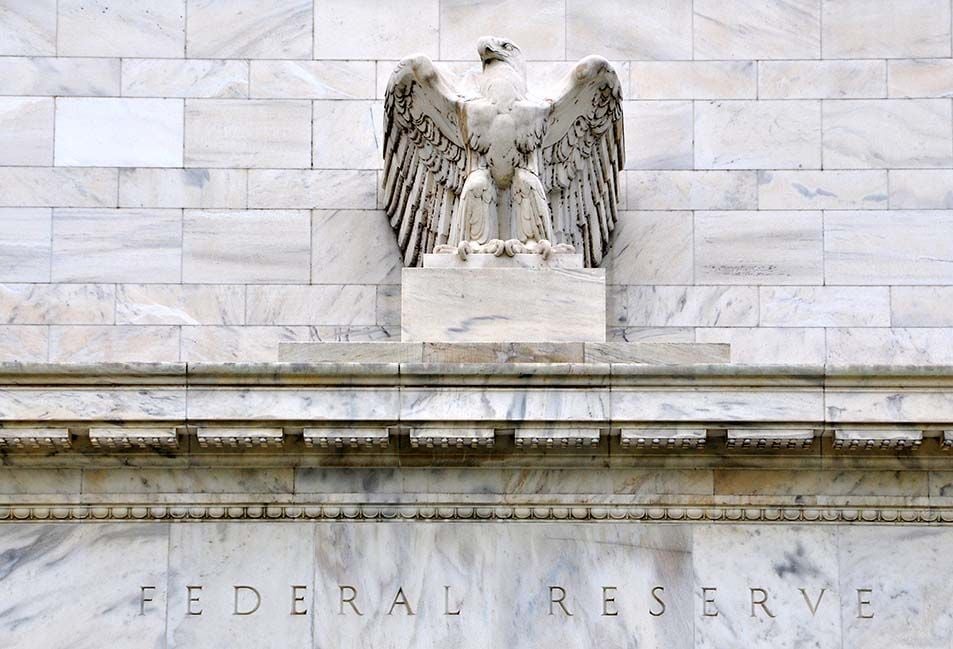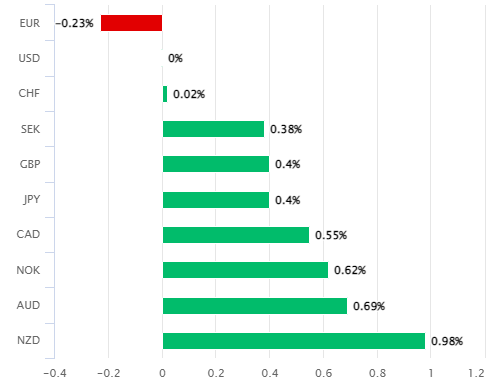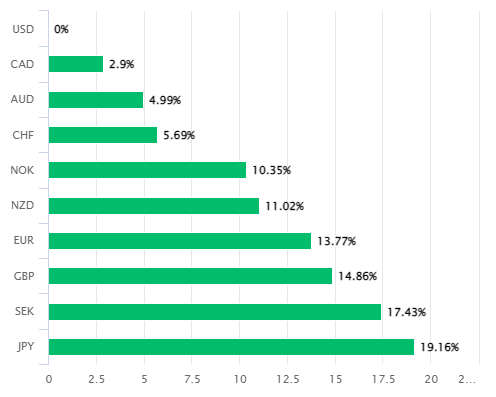U.S. Dollar and the Jackson Hole Speech: Analyst and Economist Views
- Written by: James Skinner
-
"Restoring price stability will take some time and requires using our tools forcefully to bring demand and supply into better balance," - Fed Chairman Jerome Powell.

Image © Adobe Stock
Dollar exchange rates fell during a keenly anticipated speech from Federal Reserve Chairman Jerome Powell on Friday but were quick to recover and place other currencies on the back foot as financial markets contemplated what his remarks could mean for the U.S. economy and interest rate outlook.
Friday's landmark address focused heavily on three key lessons that modern policymakers are taking away from the Fed's experience with inflation during the bleak decades of the 1970s and 1980s but also offered a sobering assessment of the outlook for the U.S. economy as the bank seeks to bring inflation down from multi-decade highs.
"Restoring price stability will take some time and requires using our tools forcefully to bring demand and supply into better balance. Reducing inflation is likely to require a sustained period of below-trend growth. Moreover, there will very likely be some softening of labor market conditions," Powell said in part.

Above: U.S. Dollar Vs G10 counterparts on Friday. Source: Pound Sterling Live.
"While higher interest rates, slower growth, and softer labor market conditions will bring down inflation, they will also bring some pain to households and businesses. These are the unfortunate costs of reducing inflation. But a failure to restore price stability would mean far greater pain," he added.
There was recognition on Friday of the widespread signs that the U.S. economy is slowing although there was also a clear warning against assumptions that could lead the Fed to back away from raising interest rates further or to begin cutting them at some point during the early months of the new year.
The speech came as financial markets attempt to gauge if Fed policymakers will elect in favour of a third consecutive 0.75% increase in the Fed Funds interest rate at the September meeting and amid much curiousity about how fast the bank will lift borrowing costs to their 'terminal level' over subsequent months.

Above: U.S. Dollar Vs G10 counterparts in 2022. Source: Pound Sterling Live.
June's forecasts suggested that level was somewhere near to the four percent handle and likely to be reached in the early months of 2023 but Chairman Powell reminded on Friday that those projections will be updated imminently and other Fed policymakers have recently advocated a steeper trajectory.
The darkening economic outlook and lingering upside risks in relation to the interest rate path ahead are some of the possible reasons for why the Dollar's initial sell-off in the wake of Friday's adddress was short-lived, although not all observers share the same views.
With that, below is selection of comments detailing what various economists and currency strategists make of the remarks, and in no particular order.
Bipan Rai, North American head of FX strategy, CIBC Capital Markets
"On the surface, there wasn’t much new in Powell’s speech today. The Fed chair kept it short, and focused largely on getting the message across that the commitment on getting inflation down to target was still firm."
"There were some things that caught our eye. While a ‘soft landing’ is naturally the goal, it felt like Powell placed less of a weight on that in his speech today."
"For markets, this wasn’t the speech to push USD higher based on expectations for September FOMC (the “50 or 75” debate will be settled by incoming data). Instead, it was about getting those 2023 cuts priced out."
"That’s USD supportive at the margin."
"Nothing we heard today changes our USD call. We’re still constructive – particularly against commodity FX proxies and select EM. We remain long USD/CAD via call spreads (1.30/1.35 strikes)."
Ian Shepherdson, chief economist, Pantheon Macroeconomics
"The Fed is not yet ready to acknowledge that the inflation picture is materially improving."
"The one glimmer of hope in the speech was the Mr. Powell acknowledged that the inflation shock over the past year has been due both to strong demand and tight supply constraints."
"He left unsaid the point which we have been making for some time, namely, that tight supply has facilitated a massive surge in margins, which likely will reverse, driving inflation down, now that inventories are returning to normal."
"The Chair’s message today is that the Fed thinks these conditions are unlikely to be met as soon as markets expect. We think he is probably right."
Joshua Mahony, senior market analyst, IG
"After initial resilience, we have seen markets head lower in the wake of a hawkish Jackson Hole appearance from Jerome Powell today. Powell’s decision to reiterate the central importance of combatting inflation over growth does highlight the willingness to maintain the upward trajectory for rates in the face of economic suffering."
"While markets have recently taken solace from the tick lower in inflation, today served to highlight the fact that we remain a long way from the position where rates can be brought under control once again. For investors, there is a risk that we could embark upon another period of weakness, with the buoyant earnings season fading into a distant memory."
Dr Christoph Balz, senior economist, Commerzbank
"Chair Powell struck a hawkish tone in his speech at the Jackson Hole conference, emphasizing the need for a restrictive monetary policy."
"We still expect the Fed to raise key interest rates from the current 2.50% to as high as 4% by year-end. Powell's statements also signal that he supports a front-loading of rate hikes. The sharp tightening of monetary policy, however, is likely to trigger a recession next year."
"We believe it is likely that by the middle of next year, when the economy has slipped into recession and inflation is slowly falling, the discussions about monetary policy will change and calls for interest rate cuts will emerge."
Kevin Cummins, chief U.S. economist, Natwest Markets
"After financial markets digest news from Jackson Hole, attention will turn to economic reports. We expect the general tone of the August data to remain positive, albeit a bit less upbeat than the July data."
"Following July’s surge of 528,000, we look for the growth in overall payrolls to have cooled somewhat in August to 200,000 and for the unemployment rate steadied at 3.5% (after 0.1 point drop to 3.46% in July)."
